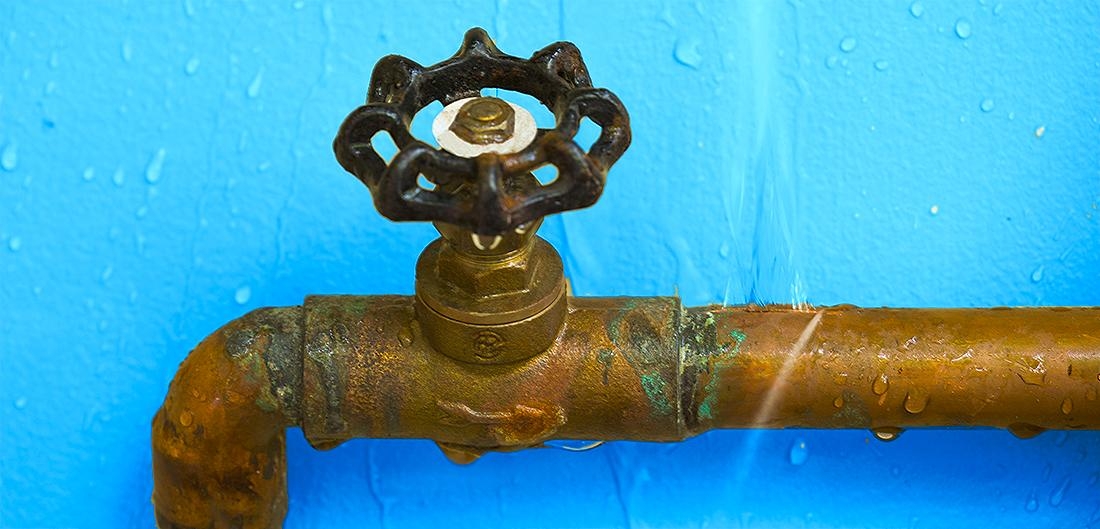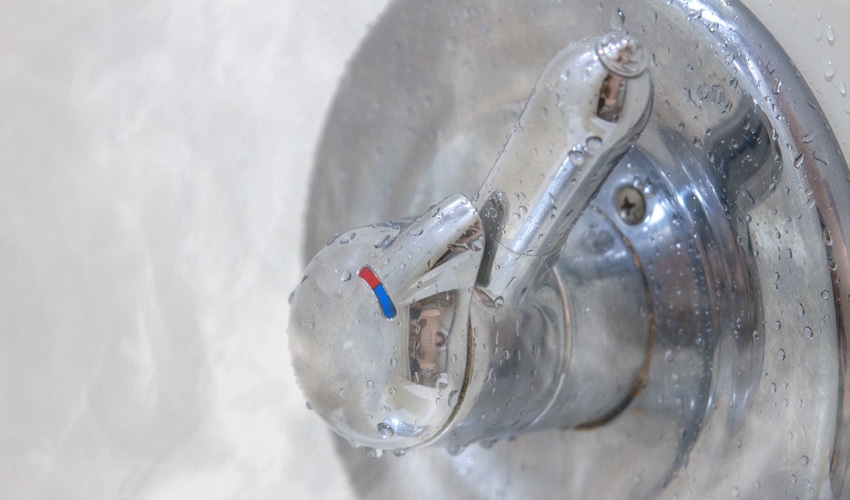Why is my cold water frozen but not hot?
Have you ever turned on your faucet, expecting to feel the warmth of hot water, only to be met with icy coldness? It can be frustrating, especially during the winter months when the last thing you want is a cold shower. But why is it that the cold water is frozen, while the hot water remains unaffected?
Understanding the science behind this phenomenon can help you troubleshoot the issue and prevent it from happening again in the future. It’s not uncommon for homeowners to experience frozen pipes during the colder months, but it’s less common for only the cold water to be affected. So what could be causing this problem?
In this article, we’ll explore the possible reasons why your cold water is frozen while your hot water remains unaffected. We’ll also provide some tips on how to prevent this issue from occurring and what to do if it does happen. So if you’re tired of taking cold showers and want to get to the bottom of this problem, keep reading.
What Causes Cold Water to Freeze?
Cold water is an essential part of daily life, especially during the winter months when we need to take hot showers or wash dishes. However, sometimes, cold water can freeze, leaving us without our basic needs. Despite the belief that cold water cannot freeze, it can indeed freeze, just like hot water. In this article, we’re going to discuss what causes cold water to freeze, how it can happen, and what you can do to prevent it.

The first reason why cold water might freeze is the temperature. When the temperature outside or inside your house drops below 32°F (0°C), water molecules begin to move slower and start forming into ice crystals, causing the water to freeze. This phenomenon tends to occur in areas of the house that are exposed to cold temperatures, such as crawl spaces and exterior walls. Therefore, it’s essential to keep these areas insulated to prevent cold air from entering.
Another reason why your cold water may freeze is due to the water supply lines. These lines are typically located in unheated areas such as cabinets or crawl spaces. If these areas become too cold, the water inside the pipes may freeze and cause a blockage. This blockage can lead to pipe bursts and result in significant damage to your home. To prevent this, insulate your pipes with heat tape, or install cabinet doors to keep the cold air out.
Lastly, the water pressure can also play a crucial role in causing cold water to freeze. When water flows through the pipes at high pressure, it can decrease the temperature at which water freezes. Therefore, reducing the water pressure in your home during extremely cold temperatures can help prevent your cold water from freezing.
How to Tell if Your Water is Frozen
When the winter months arrive, many people start to worry about frozen pipes and the damage they can cause. One of the telltale signs of frozen pipes is when you turn on the tap and no water comes out. But how can you tell if it’s just the cold water that’s frozen, or if the hot water is affected too?
The first thing to do is check the temperature of the water. If both hot and cold water taps are turned on, and the cold water is not coming out but the hot water is, then you can assume that the cold water is frozen. If both taps produce no water, then both pipes may be frozen.
Another way to tell if your cold water is frozen is by listening to the pipes. If you hear a banging or clanging noise when you turn on the tap, it’s likely that there is ice in the pipe, causing it to stretch and vibrate. This is a sign that the water is not able to flow through the pipe, and it’s time to take action.
You can also touch the pipes under the sink or in the basement to feel if they are cold to the touch. If the cold water pipe feels significantly colder than it should be, then it’s possible that it’s frozen.
If you suspect that your water is frozen, it’s important to take immediate action to prevent further damage. One option is to use a hair dryer or heat gun to warm the pipe and melt the ice inside. Be very careful when using hot tools near any flammable materials. You can also wrap the pipe with an electric heating pad or space heater to slowly thaw the ice.
It’s important to note that trying to fix frozen pipes on your own can be dangerous, and it’s always best to call a licensed plumber for help. The cost of repairs will likely be much less than the damage that can be caused if the pipes burst, so it’s worth seeking professional help.
Prevention of Frozen Pipes
Freezing temperatures can cause a range of problems, and one of the most common ones is frozen pipes. This can lead to costly repairs, water damage, and even health hazards. However, with some precautions and preventative measures, you can avoid the hassle and expense of dealing with frozen pipes. Here are some tips to help you prevent your pipes from freezing:
1. Keep your home warm – One of the easiest ways to prevent your outdoor or indoor pipes from freezing is to ensure that the temperature inside your home does not drop below 55°F. This can be achieved by setting your thermostat to a consistent temperature, even when you’re gone.
2. Insulate your pipes – Ensure that your pipes are properly insulated, especially those that are exposed to the outdoors or crawl spaces. Foam insulation, heat tape, or pipe-heat cables can be used to insulate your pipes and prevent them from freezing.
3. Seal cracks and gaps – Look for any cracks or gaps in the exterior foundation of your home, walls, or basement areas. Seal them properly with caulk or foam insulation to prevent cold drafts from entering your home and freezing your pipes.
4. Open cabinets – During periods of extremely cold weather, open the cabinet doors under your sinks to allow warm air to circulate around your pipes. This can also help prevent pipes from freezing.
5. Drip faucets – When temperatures are below freezing, allow a small trickle of cold water to drip out of your faucets. This can help keep the water moving through the pipes and prevent them from freezing.
6. Disconnect hoses – Disconnect your outdoor hoses and store them away before the onset of winter. This will help prevent water in the hose and outside faucets from freezing and potentially damaging the pipes.
Thawing Out Frozen Pipes
Frozen pipes are a common problem during the cold winter months, but they can cause significant damage to your home if left untreated. When water freezes, it expands, which can lead to cracks and even bursts in your pipes. If you suspect that you have frozen pipes, it’s crucial to address the issue as soon as possible to avoid expensive repairs. Here are some steps you can take to thaw out your frozen pipes safely.
The first step is to locate the frozen pipe or pipes. Look for bulges or leaks in exposed pipes, and check for reduced water flow or no water at all from faucets in your home. Once you have identified the frozen pipes, it’s essential to turn off the water supply to prevent any further damage.
Next, you will need to thaw the frozen pipes. There are several methods to do this, depending on the location and accessibility of the frozen pipes. One of the simplest ways is to use a hairdryer on the affected area, moving the dryer back and forth until the water begins to flow again. Be sure to use a dryer that is rated for safety, and keep it away from any flammable materials.
If the frozen pipe is in an inaccessible location, such as behind a wall or in the ceiling, it’s better to seek the assistance of a licensed plumber who can safely thaw the pipes without causing further damage. A plumber may use a heat gun or an electric heating pad to thaw the frozen pipes, or they may recommend opening up the wall to access the pipe.
Once the pipes have thawed, slowly turn the water supply back on and check for any leaks or damage. Sometimes, the water pressure may cause the pipes to burst, so it’s crucial to check for any signs of pipe bursts or water damage.
Finally, to prevent frozen pipes in the future, ensure that your home is properly insulated and that any exposed pipes are covered with foam insulation or pipe-heat cables. You can also keep your home at a consistent temperature, even when you’re away, to prevent the temperature from dropping below freezing.
When to Call a Licensed Plumber for Help
When faced with a plumbing issue, it can be tempting to try and handle it yourself in order to save some money. However, there are certain situations where it’s better to call in a licensed plumber to help. Here are some signs that it’s time to pick up the phone and call for professional assistance:

1. Frozen Pipes – If you’ve tried to thaw out your frozen pipes with no success, it’s time to call a plumber. Attempting to thaw pipes improperly can cause them to burst, leading to costly repairs.
2. Low Water Pressure – If you’re experiencing low water pressure throughout your home, it may be a sign of a larger issue. A licensed plumber can diagnose the problem and provide a solution that improves water flow.
3. Persistent Clogs – If your sink or drain continues to clog despite repeated attempts to fix it, the problem may be deeper in the plumbing system. A licensed plumber can use specialized equipment to locate and clear the clog.
4. Leaking Water Heater – A leaking water heater is a sign of imminent failure. A licensed plumber can quickly diagnose the issue and replace your water heater before it completely fails.
5. Gas Leak – If you suspect a gas leak in your home, immediately evacuate the building and call your gas company. After the gas company has shut off the supply, call a licensed plumber to locate and repair the source of the leak.
6. Renovations – If you’re planning a bathroom or kitchen renovation, it’s important to consult a licensed plumber to ensure that all plumbing work is properly installed and up to code.
Meet Lila Robinson, an expert in the world of plumbing with a talent for delivering valuable insights and captivating articles on an array of plumbing topics. With years of experience handling complicated plumbing issues, Lila has become a go-to resource for homeowners and businesses alike.
Packing vast knowledge in plumbing tools and science, Lila creates a sense of community on her blog and social media accounts, engaging with readers from all walks of life. Her writing style is authentic, unique, and engaging, and she has an exceptional ability to break complex concepts into understandable ideas.
If you have encountered a plumbing issue, chances are Lila Robinson has conquered it. Her articles uncover the underlying problems behind some of the most unexpected plumbing problems, from tankless water heater error codes to drain snakes in vents.
Whether you’re a beginner or an experienced plumber, Lila Robinson’s blog has something for you. Follow her social media accounts to keep up-to-date with the latest posts and join the conversation.